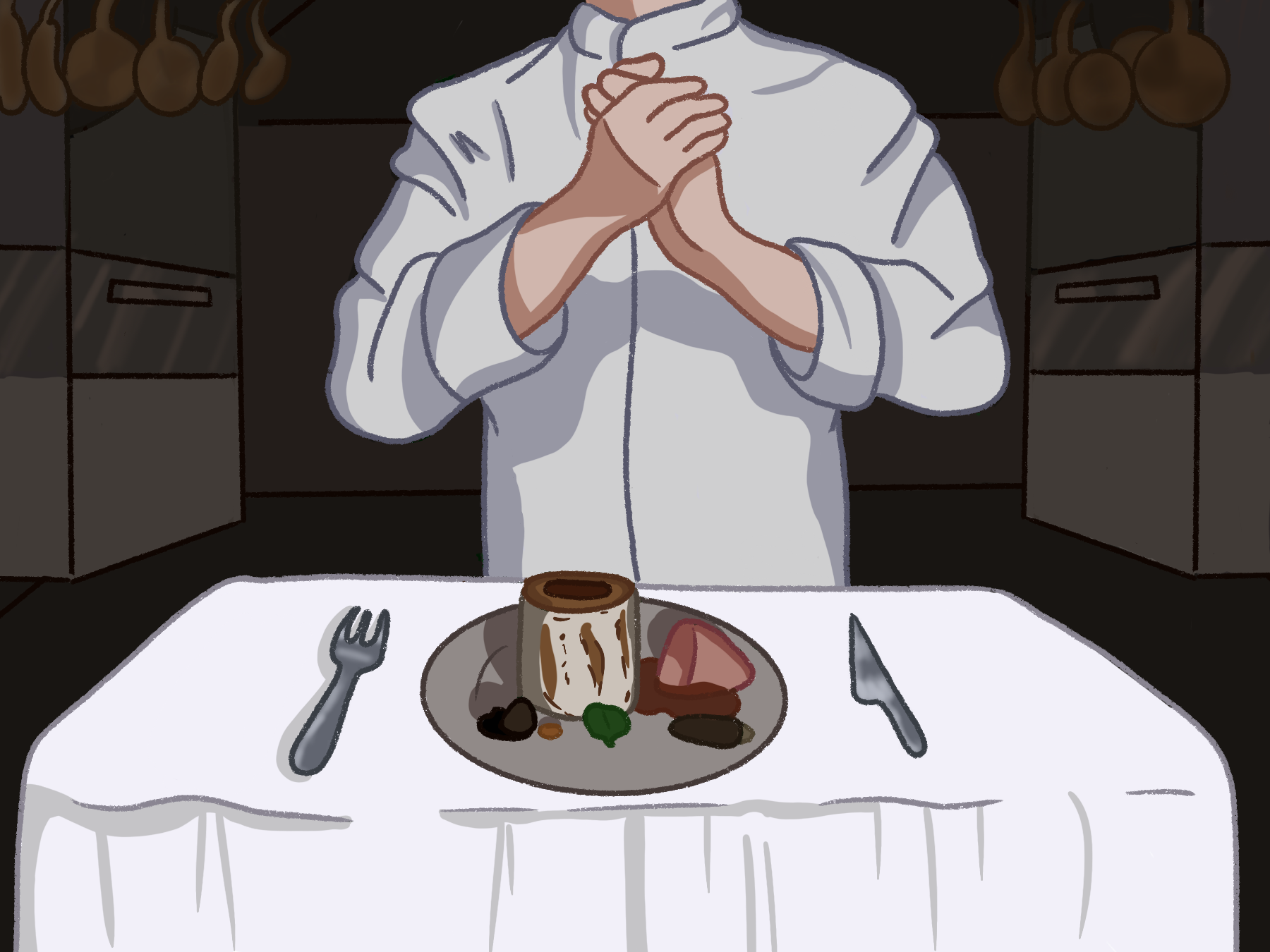In November 2022, director Mark Mylod released “The Menu,” a comedy horror film in which renowned chef Julian Slowik serves foodies, critics and stakeholders an extravagant meal at his restaurant Hawthorn. The film stars Ralph Fiennes as Julien, who has been in films such as “Schindler’s List” and the “Harry Potter” series. It also features Anya Taylor-Joy as protagonist, Margot, who stars in “The Queen’s Gambit” and “The Witch.” Slowik, the executive chef, develops an ever-changing menu specific to the guests dining with him: an acclaimed critic and her assistant, businessmen who finance the restaurant, a C-list celebrity and his mistress, restaurant regulars and a foodie accompanied by his reluctant date. Slowik notes that Margot was an unintended guest, which is unheard of at a restaurant like Hawthorn. As the plot unfolds and viewers witness Slowik’s intentions behind his invitations, Margot must outwit Slowik and his intricately planned menu.
Dinner is served through a series of 10 courses, each designed after courses from real Michelin-star restaurants around the world. Each dish was constructed to evoke emotions and memories of Slowik and his kitchen staff, forcing the audience to feel the pressure under which fine-dining chefs operate. Chef Slowik is angry about the direction in which the culinary industry is headed, furious at the lengths he must go to in order to keep his restaurant afloat. His menu reflects this frustration. In order to properly represent the attitudes of Michelin-star-winning kitchen staff, Mylod hired chef Dominique Crenn, owner and executive chef of three-Michelin star Atelier Crenn in San Francisco, to fashion the 10-course meal and to ensure accuracy in the film. Mylod also invited David Gelb, the creator of “Chef’s Table,” to the set in order to style the film after the cooking show and realistically portray the artistry of the culinary industry.
“The Menu” portrays the pressure to perform that chefs in all types of restaurants experience in order to keep the businesses open, meet the expectations of their superiors and maintain a lifelong passion. The kitchen is a stressful, fast-paced workplace where not just anyone can survive. Many chefs work well over the typical 40-hour work week, experience extreme fatigue and often resort to alcohol or drugs to cope with their exhausting occupation — even chefs who have worked to be in this position their whole lives. The work-life balance is seemingly non-existent. In fine dining especially, chefs are continuously exploited behind closed doors by their superiors to attain the highest honors in the industry and work their way through the ranks, from line cook to sous-chef. This chef-staff relationship is accurately illustrated when the head chef drives Jeremy, the sous-chef, to tears of humiliation in front of the guests and continuously disrespects Elsa, the maître d’hôtel.
Although a New York Times article argues that the fault of the culinary industry exploiting workers to create exclusive dining experiences should fall on the Michelin-star and award-winning chefs, it is more likely that the blame should be placed upon the .01% who can afford this type of fine dining. Reliance on food critics has taken away from the actual experience of dining because professional criticism of a meal, which is entirely subjective, can make or break the future of a restaurant. The industry of food critics is not completely unbiased, either. Many food journalists have a low salary, or do not have their meals paid for on the job. Therefore, if they are invited to a restaurant or have expenses like hotels and transportation paid for, they may feel the need to compensate in their review, giving a more lenient or optimistic critique. Outside of the professional realm, internet reviews of local restaurants are most often negative, which skews the ratings of these restaurants and leads future consumers to avoid even trying the reviewed businesses. Many argue that the restaurant industry is being exploited by individuals who cannot cook with as much adaptability, maintain the long hours of sweat and stress or understand the tools and techniques necessary to execute certain dishes. The enjoyment of the craft of cooking is being stripped from the people who have the passion to pursue a career in the field. This poisons the industry.
As Margot attempts to escape from Slowik and the remote restaurant, she insults his “loveless cooking” and performative meal. Instead, she requests a no-nonsense cheeseburger from the chef, thereby capitalizing on his innocent, joyful memories of his apprenticeship in the industry. Slowik is nearly brought to tears as he smiles at the sizzling patties and oozing cheese on the grill. Cooking the basic, staple food reminds him of what it meant to cook for people who weren’t leeching off of his restaurant for status or wealth. Just as it’s portrayed in the movie, the art of food is about the joy that chefs experience when producing admirable, delectable dishes. The craft of gastronomy was emphasized in “The Menu” not through the ten meticulous and precious courses perfectly designed for the evening, but through the elation and satisfaction Chef Slowik feels when he returns to the heart of his practice.
“The Menu” is a gruesome must-watch for both diners and cooks alike, as it provides critical insight into the cutthroat restaurant industry and sheds light on the mental health struggles that its staff face on the job.

















